What is a Megalodon?
The Megalodon is a monstrous sea creature that seems to closely resemble a shark. It is common for people to associate the Megalodon with the great white shark in size and ferocity, even though the two species have many noticeable differences. Perhaps one of the biggest differences is that the great white shark averages about 11 to 13 feet in length. In comparison, the smallest a Megalodon shark would ever be was about 11 feet during its infancy!
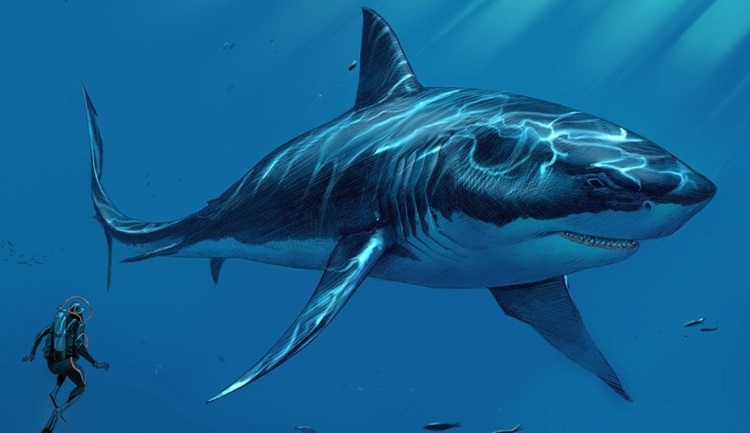
The Megalodon was a massive apex predator that had little to fear and could take its pick in terms of prey. Studies suggest that the Megalodon could have grown up to 59 feet in size at its largest – a little more than half the size of a basketball court! This massive creature was known to reach sizes that are difficult to comprehend. In fact, based on existing fossils of the creature, it is thought that the jaws of the Megalodon alone could have been 7 feet in width – big enough to swallow a human being whole.
The Megalodon was also known to possess impressive power and speed. Their massive jaws were filled with teeth that averaged over 7 inches in length and the creatures were known to be able to bite with a force of up to 41,000 pounds of force! Plus, it is thought that the Megalodon would have been able to swim at an impressive speed of about 11 miles per hour, making it a difficult predator to outrun.
First Impressions of the Megalodon
There’s no contesting the fact that the Megalodon was a large and fearsome creature in its prime – the sheer size of its teeth (up to 7.5 inches) is proof enough of its terrifying build. In fact, the Megalodon was so massive that when our early ancestors first made records of Megalodon teeth during the Renaissance suggests that they attributed them to monsters of a different kind. During this time period, it was most common to find Megalodon teeth in rocky formations. Early theorists originally thought that the teeth were the petrified tongues of dragons and snakes!
This theory was widely accepted until 1667, when a Danish naturalist named Nicolas Steno recognized them as being shark teeth because of the research he had been conducting. He illustrated the Megalodon tooth inside his book, ‘The Head of a Shark Dissected’, along with a famous drawing of a shark’s head that featured Megalodon teeth.
Later, in 1843, Louis Agassiz named the shark Carcharodon megalodon. This name was very fitting. The word ‘Megalodon’ is derived from Ancient Greek and means ‘big tooth.’ The name was adopted by many other notable researchers, cementing the Megalodon as one of the most fearsome creatures to have ever roamed the oceans of Earth.
What Did the Megalodon Look Like?
Because here is little evidence of the Megalodon in modern day aside from its teeth and jaws, there are several competing theories on what the creature may have looked like. While it is assumed that the beast would have had at least some similarities to the sharks of modern day, it is possible that the Megalodon was more fearsome than we are able to imagine.
The Megalodon Looks Like a Great White Shark
One theory of the creature is that the Megalodon could have had a striking similarity to the great white shark. While this was the theory that was widely accepted when the creature’s fossils were first discovered, the popular opinion has since shifted. It has been recognized that the Megalodon was only associated with the great white shark because of the similarities of the two creatures’ teeth. Since our understanding of sharks has progressed, however, it has become clear that the great white shark and the Megalodon do not have as much in common as we originally assumed.
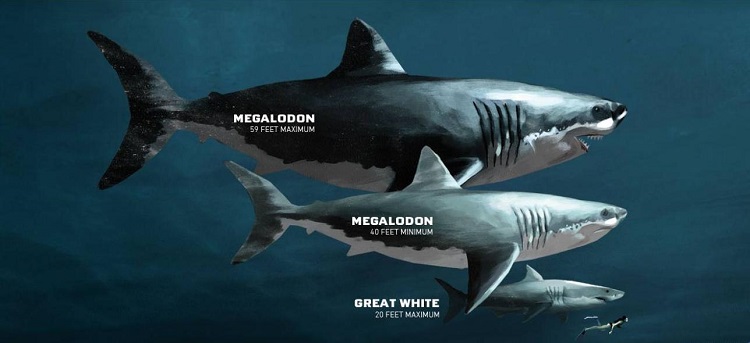
Nonetheless, if the Megalodon did resemble the great white shark it would have certainly been a fearsome sight to behold. It is likely that its jaws would have been more blunt and comparably wider than the great white, but assumed that the robust build that is associated with the great white would have been almost identical. The fins are also assumed to be similar – although much thicker to allow it to move quickly through the seas. This version also assumes that the Megalodon would have small, deep set eyes that resembled that of a pig.
The Megalodon Looks Like a Whale Shark
There have also been assumptions that the Megalodon could have been similar to the whale shark or basking shark in appearance. This is likely because of the sheer size of these creatures. The basking shark is known to reach lengths of 20 to 26 feet in length. The whale shark is even larger, reaching up to 41 feet in length. This makes the whale shark the largest known extant (still living) fish species in modern day – a title that was once held by the Megalodon.
There are some conflicting opinions surrounding this statement, largely because of what the whale shark and basking shark prey on – plankton. These two shark species are part of a group of only three shark species that feeds on plankton through filter feeding (the other is the megamouth). Because the Megalodon was known to be a purely carnivorous beast, many argue that it is likely its anatomy was significantly different from these species.
Still, the sheer size of the creature does make some wonder. Those who believe the Megalodon could have been similar in build to these sharks speculate that the Megalodon would have also had a large crescent shaped tail that helped it move swiftly through water. The anal and dorsal fins would have been fairly small, and there would have likely been a caudal keel on either side of the tail fin. This build is common among many large sea species and helps to reduce drag while swimming, allowing sea creatures with this build to reach impressive speeds.
The Megalodon Looks Like a Sand Tiger Shark
Lastly, there are those that posit that because the Carcharocles Megalodon descended from Otodus, and because the teeth of these creatures resemble the sand tiger shark, the sand tiger shark may be the closest resemblance to the Megalodon in modern day. While there are some who readily accept this theory, others are more doubtful.
If the Megalodon resembled the sand tiger shark, it would have been a carangiform swimmer. Carangiform swimmers generate most of their power from the very rear part of the body and the tail. This allows them to swim at impressive speeds but is not as ideal for long distance swimming.
Great white sharks, on the other hand, are thunniform swimmers. This means that they are able to generate power in the tail and the peduncle (the area where the main body connects to the tail). Having this type of movement allows the great white shark to swim quickly and qualify as a long distance swimmer – an important trait to have when considering the large roaming area that was covered by the Megalodon.
How Long Ago Did the Megalodon Live?
The earliest known fossils of the Megalodon suggest that the creature first came into being around 28 million years ago and existed until about 2.6 million years ago. Based on our current fossil records of the creature, it is thought that they went extinct around the end of the Pliocene era.
In its early years, the Megalodon was often thought to be somehow related to the great white shark and was classified in the Lamnidae family. This mistake was made based on the perceived similarities on the teeth of the great white shark and the Megalodon. It is worth mentioning, however, that there was very little research to inform the early perspectives of sharks, resulting in a misidentification of the Megalodon’s species.
With new information (largely in part to a fossil that showed a connection between great white sharks and Mako sharks), scientists have been able to properly place the sea monster into the Otodontidae family under the Carcharocles genus (Carcharocles megalodon). It has also been established that the Megalodon was a direct descendent of the Otodus obliquus shark, which lived from 60 million years ago to about 13 million years ago. Although the Otodus obliquus was a respectable size (ranging from about 30 to 40 feet), it in no way rivaled the mighty Megalodon.
Where Did the Megalodon Live?
Based on where we have found the Megalodon’s fossils around the world, it is known that the creature had a large feeding ground and little competition. The massive sea monster was able to endure a wide range in temperature from 34 to 75 degrees Fahrenheit (1 to 24 degrees Celsius), though it certainly preferred tropical waters. Remains of the mighty beast have been discovered globally, including Europe, Africa, the Americas, and Australia. Megalodon teeth have also been discovered far away from the main continents of the world, such as in the Marianas Trench in the Pacific Ocean (East of Japan and the Philippines).
Additionally, the Megalodon was able to exist in several types of marine environments. It is known to have lived in shallow costal waters, swampy costal lagoons, littorals (the part of the sea closest to shore), and offshore deep water areas. Although it was not common to find adult Megalodon remains in the costal areas, fossils that have been found suggest that the Megalodon nursed its young in these more nourishing and shallow waters before allowing them to venture into the dangers of the deep.
Why Don’t We Know More About the Megalodon?
With all the technology available to researchers today, it would seem that we should have more information concerning the Megalodon and what it looked like. Much of our lack of information, however, is not because of technology, but because of a shark’s physical build.
The majority of a shark’s body is composed of cartilage which deteriorates quickly upon the death of the creature. This makes it difficult for scientists to determine the size, build, and traits of such creatures because most of their fossil record is made up of teeth. Scientists use the teeth that are left behind from prehistoric sea creatures to determine how about how large they could have grown to be based on our knowledge of shark evolution and growth patterns that can be observed in modern day.
There are, however, some Megalodon vertebrae that have been discovered. The best preserved skeleton that has been found is a partial vertebrae column that was made up of 150 vertebral centra (the bones that make up the spine). The centra ranged rom 2.2 inches to 6 inches in size, and the pattern indicated that there could have been a much bigger portion of centra that were missing. Based on what was observed from this fossil, the Megalodon could have had up to 200 centra in its vertebral column – far more than any species that still exists. It is thought that only the great white shark can come close to this number (averaging about 170 to 187).
There are also Megalodon coprolites (fossilized feces) that provide information about the eating habits and behavior of the massive beast.
What Did the Megalodon Prey On?
The Megalodon was a massive and fearsome apex predator that had its choice of whatever prey it wished to consume. While most sharks have a tendency to kill their prey by digging their teeth into the soft underside of their prey, the sheer size and power of the Megalodon allowed it to be significantly more aggressive and opportunistic when it came to finding its next meal. Studies have shown that the Megalodon was positioned even higher on the food chain that the great white shark is in modern day. This is largely because the impressive crushing force of its jaws enabled it to easily chew through the skulls and bones of many of its victims. Because of their power, Megalodons often preferred to target the heart and lungs of their prey.

Some of the Megalodon’s common prey included dolphins (including shark toothed dolphins), baleen whales, sperm whales, and bowhead whales. They were also known to feast on seals, sirenians, and large sea turtles. While the Megalodon preferred to gorge itself on larger prey, it was still an opportunistic feeder and would eat small fish and other sharks as well. Studies have shown that it is likely that the Megalodon preferred to target whales that were between 8 and 23 feet in length, thus avoiding prey that matched itself in size. This is similar to the behavior of great white sharks.
What Did Megalodon Juniors Prey On?
Studies of the Megalodon have also shown that the juvenile Megalodons had different feeding patterns than the adults. Although the infant Megalodons were known to be no smaller than 11 feet in length, they preferred to target prey much smaller than a full grown adult would. Their diet mostly consisted of fish and other comparatively small creatures.
It is also thought that as the Megalodons transitioned from juvenile age to reaching full grown adult status, they became much more ambitious. Teeth marks on the ribs of large whales match what is thought to be the structure of a juvenile Megalodon jaw. The marks show signs of healing, suggesting that the Megalodon juniors practiced hunting larger prey once they reached a respectable size, though they were not always successful.
It is also worthwhile to note that the Megalodon juniors faced predation by other species of that time. Some of these predators included the great hammerhead shark, the snaggletooth shark, and killer whales.
Was the Megalodon Extant When the First Humans Emerged?
While there is a remote possibility that the Megalodons could have still been in existence during the rise of the first humans, it is not likely. Even the latest dates of the Megalodon extinction average around 1.5 to 2 million years ago, with the first humans coming into existence around 100,000 years ago.
Furthermore, even if the two did coexist in the same timeline, it is doubtful that they ever interacted.
Why Did the Megalodon Go Extinct?
Although the Megalodon was a fearsome apex predator, its presence forced the oceans to adapt quickly in order to maintain thriving populations of sea life. In fact, it is thought that much of the ocean’s diversity in lifeforms can be traced to the introduction of the Megalodon as a predator.
Other apex predators of the time were thought to have developed strategies to keep up with the hunting tactics of the Megalodon, which increased the sea monster’s competition. In fact, it is thought that some species (like killer whales) originally developed a ‘pack predator’ mentality because of the competition that was introduced by the Megalodon. This, combined with the cooling waters of the time, was thought to have contributed to the extinction of the Megalodon.
Climate Change
Of all the factors that contributed to the extinction of the Megalodon, the most influential was likely the cooling of the world’s oceans. The oceans began to cool significantly around 35 million years ago, which eventually created the glaciation at the poles that is present in modern day. This cooling in turn caused the stalling of the Gulf Stream, which prevented nutrient-rich waters from reaching their previous destinations. This would have been extremely influential on the practices of the Megalodon, who were thought to structure the nurseries for their young in such areas. Additionally, the lack of nutrient-rich waters would have affected their food supply, making for greater competition.
In addition to this, it is theorized that the Megalodons were not equipped physically for the cooling climate of the world’s oceans. Fossil remains confirm this theory by showing the lack of Megalodon remains around the decline in ocean temperatures during the Pliocene era.
Does the Megalodon Still Exist?
While many scientists point to the fossil records as evidence that the Megalodon went extinct many years ago, there is still speculation by many cryptozoologists that the Megalodon could be alive and simply eluding the eyes of modern day science. To support their case, they often point to the two strange cases of the Megamouth Shark and the Coelacanth.
Megamouth Shark
The megamouth shark is known for its enormous size (much like the whale shark and basking shark) but was not discovered by modern science until 1976. This is largely because the creature is known to live deep underwater, in areas that are difficult for humans to explore, and only surfaces at night. Many people hypothesize that this could be one of the reasons we have yet to discover the Megalodon in modern day.
Coelacanth
The strange case of the Coelacanth is also a humbling reminder for many modern marine biologists. Originally, this fish was though to have gone extinct about 65 million years ago – long before the Megalodon. In 1938, however, the fish was discovered to be alive with a fair population off the coast of South Africa. This example serves as a reminder of how much space the world’s oceans take up and how difficult it is to know exactly how many creatures lurk in their depths.
Discovery Channel’s, Megalodon: The Monster Shark Lives
Still, others argue that the idea the Megalodon still exists is largely reinforced by fictional documentaries that are created to inspire fear among people and continue the myth. One such documentary was published by Discovery Channel – an established authority source that has since veered away from purely factual content.
The Discovery Channel featured a fictional documentary called, ‘Megalodon: The Monster Shark Lives’ for Shark Week in 2013. The story followed a group of marine biologists that went off in search of an especially large great white shark and ended up finding a Megalodon instead. After the story aired, many reports of the Megalodon began to surface. Because of the timing, these reports are largely believed to be fictional or a misidentification of other ocean life out of fear created by the documentary.







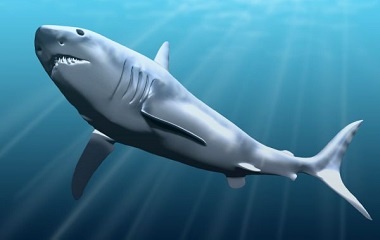
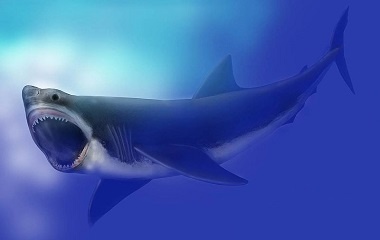
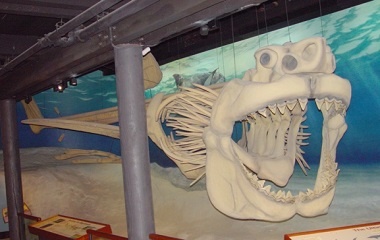
Have you guys watched The Meg
Thank you for the info! 😁
thx for the imformation this is the best